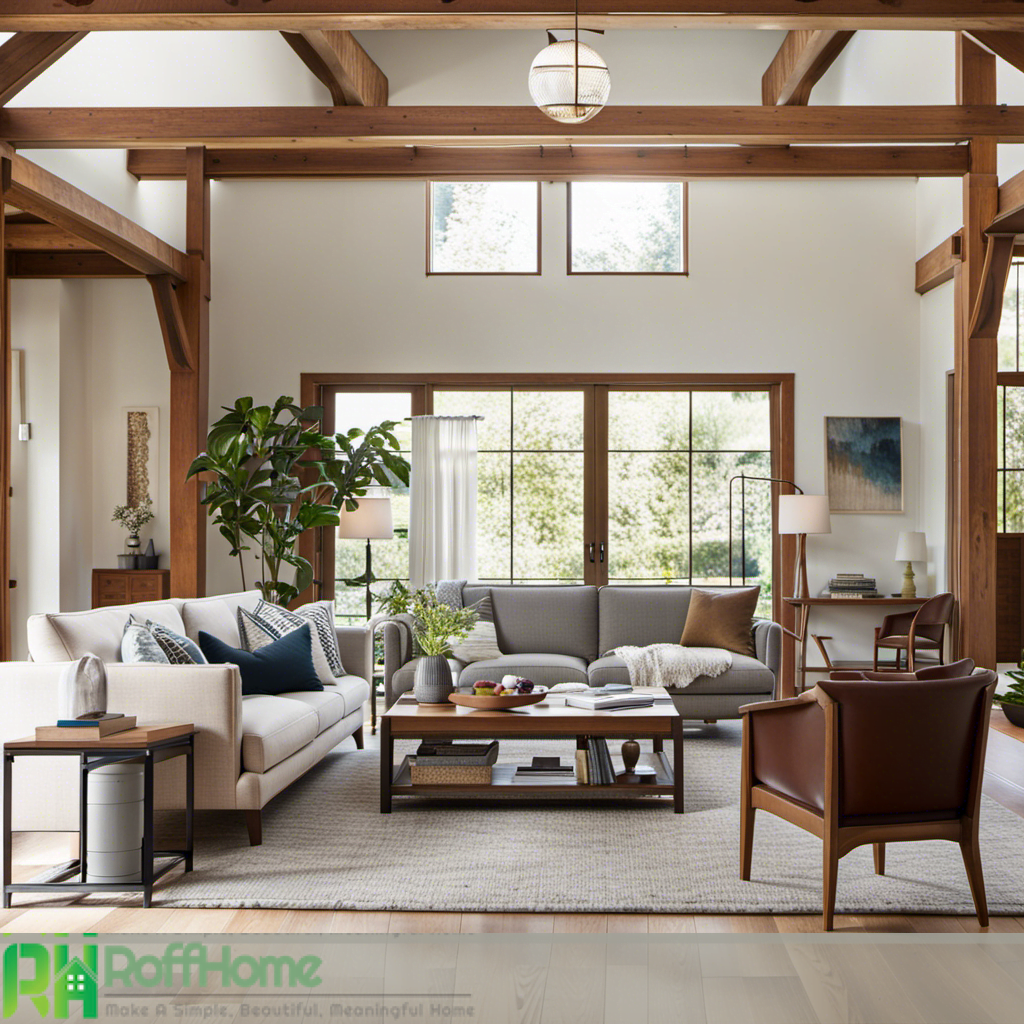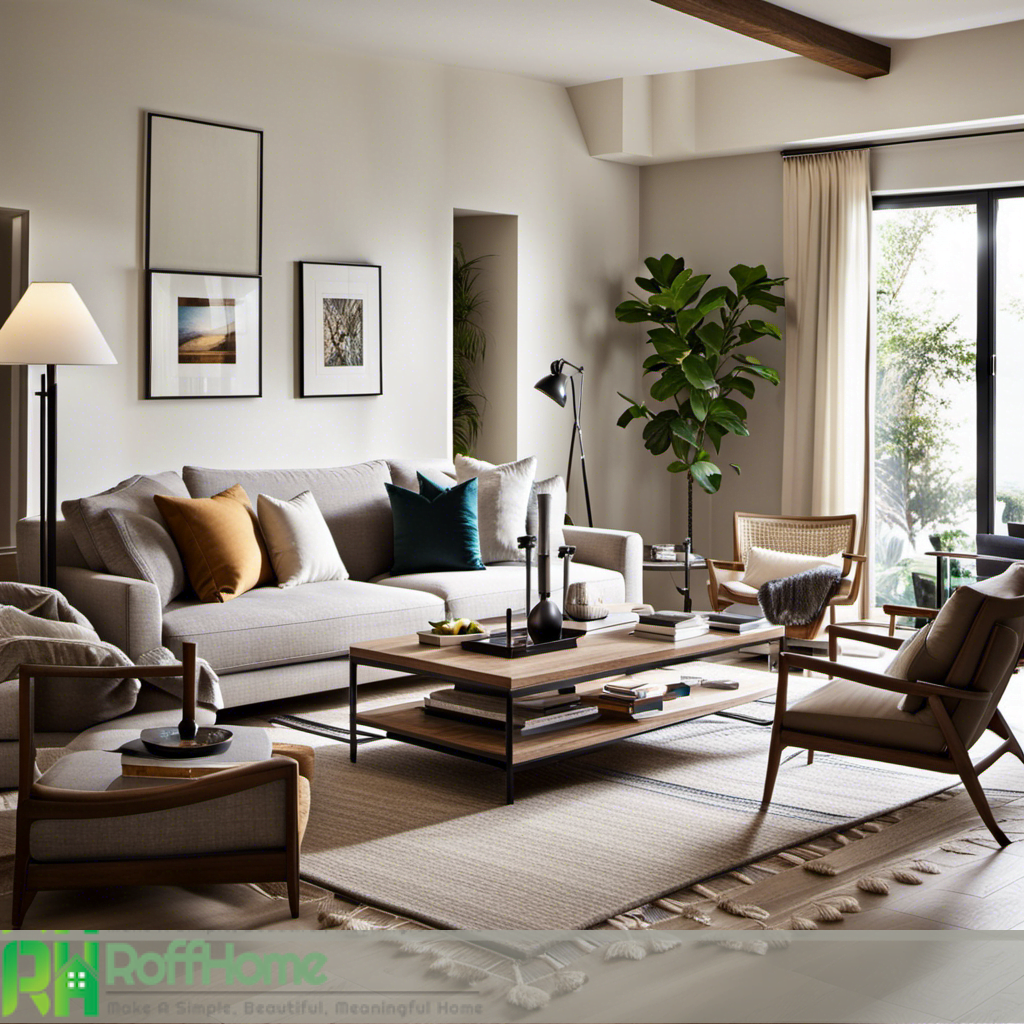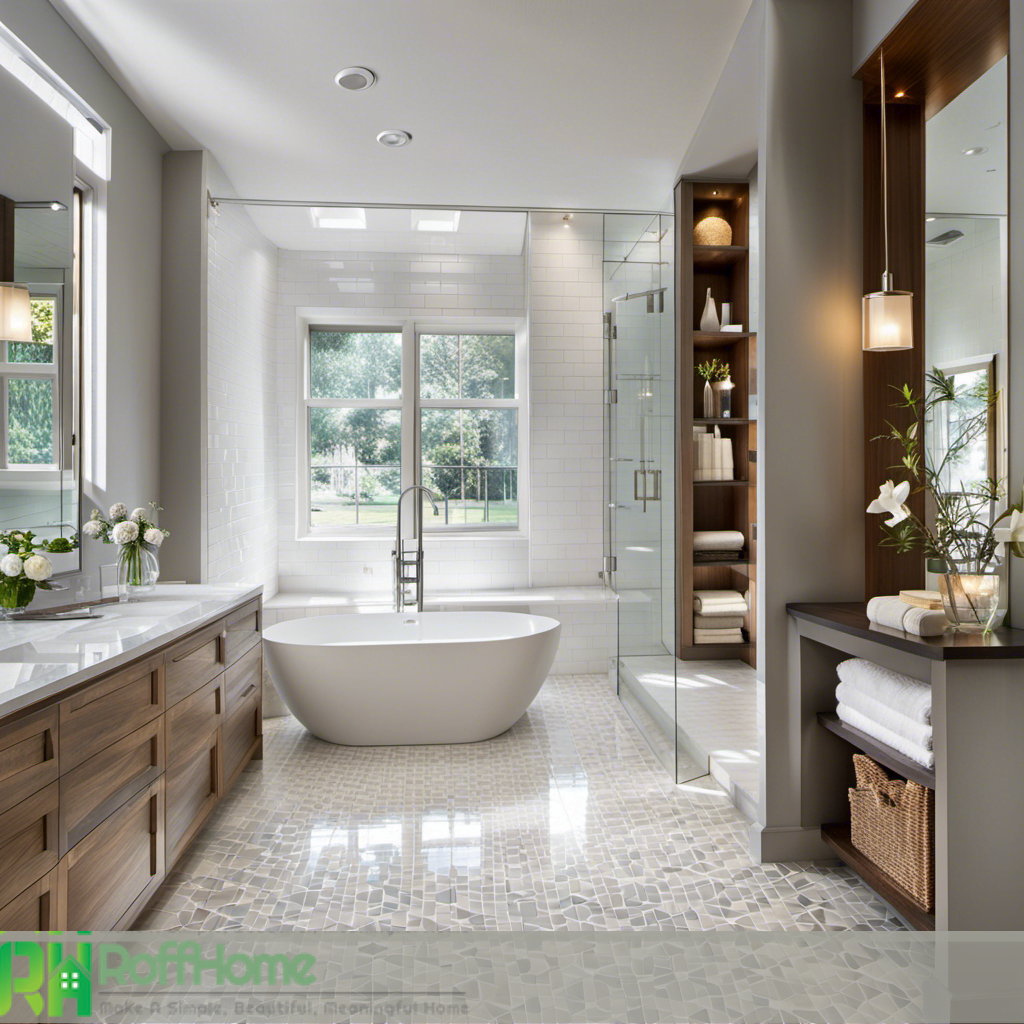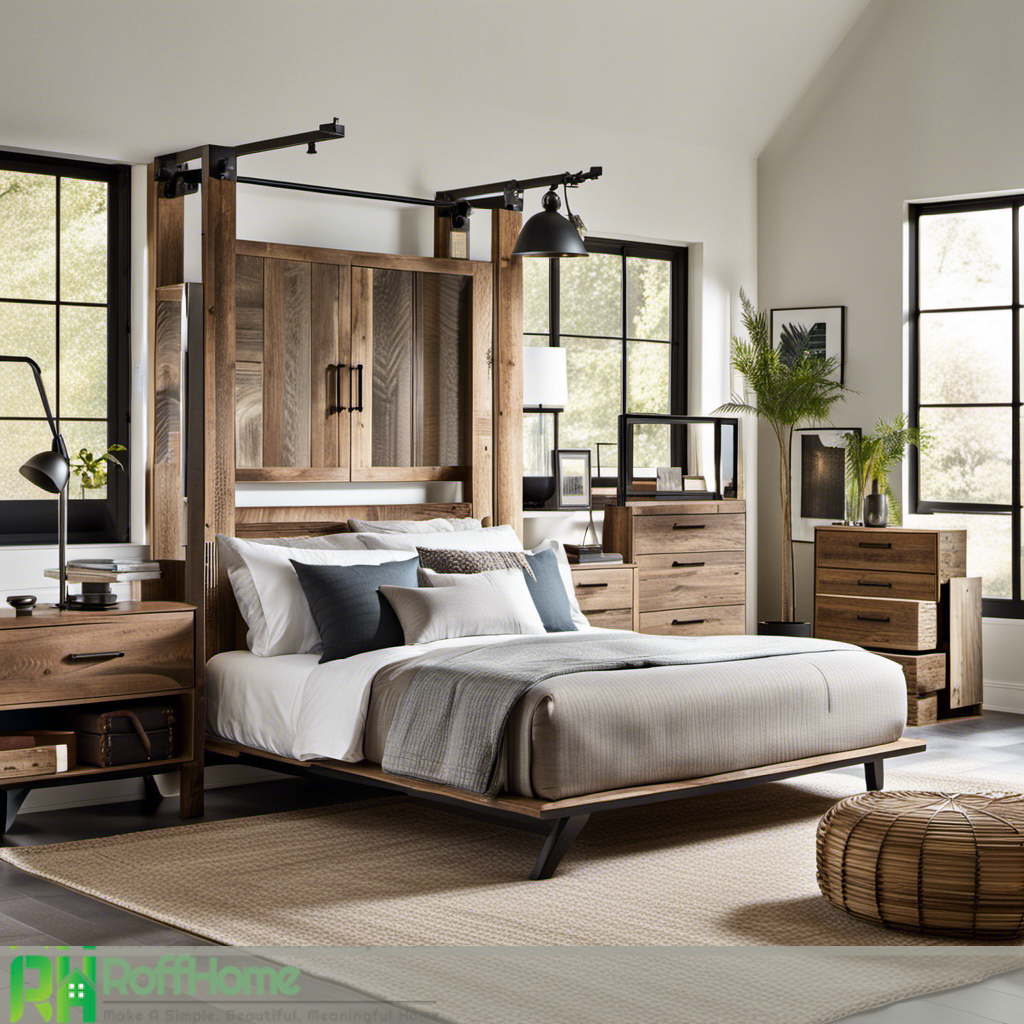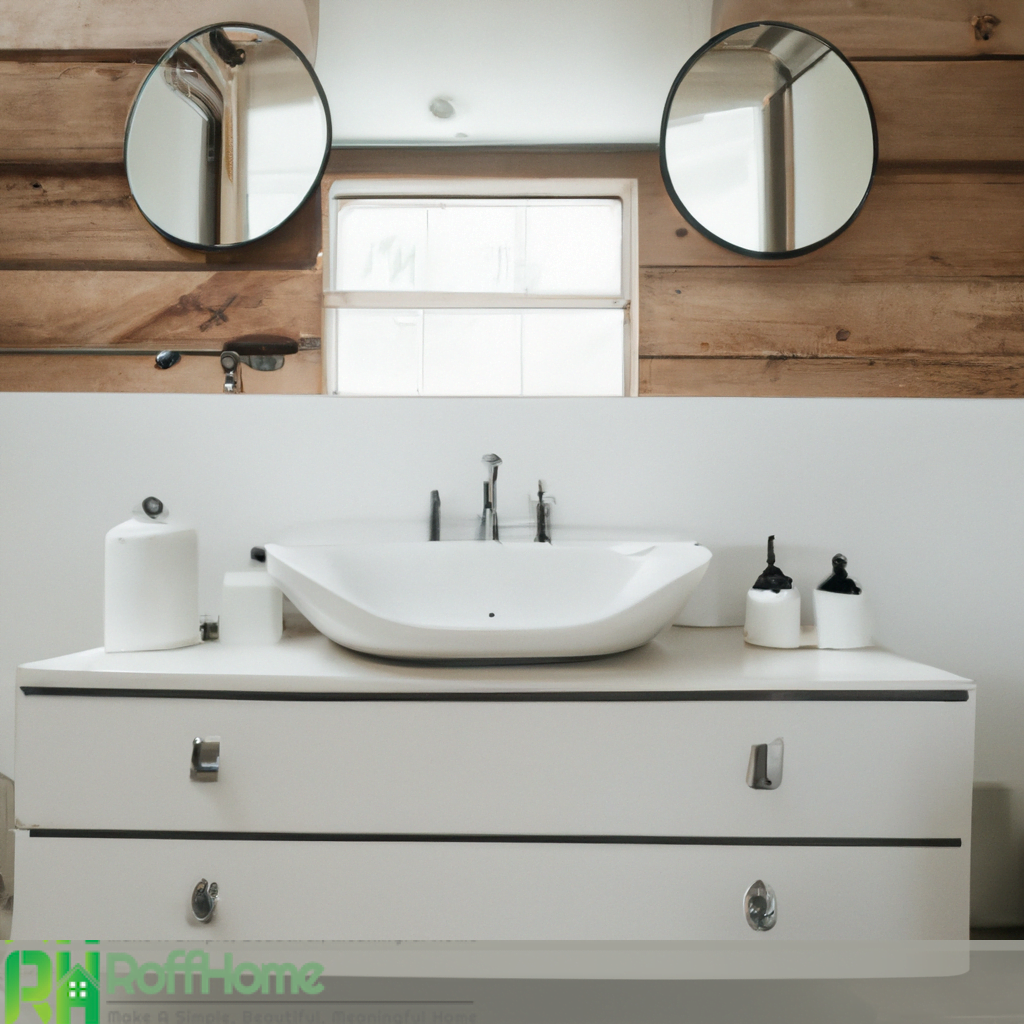Exquisite Elegance: Inspiring Dining Room Paneling Ideas for a Timeless Ambiance
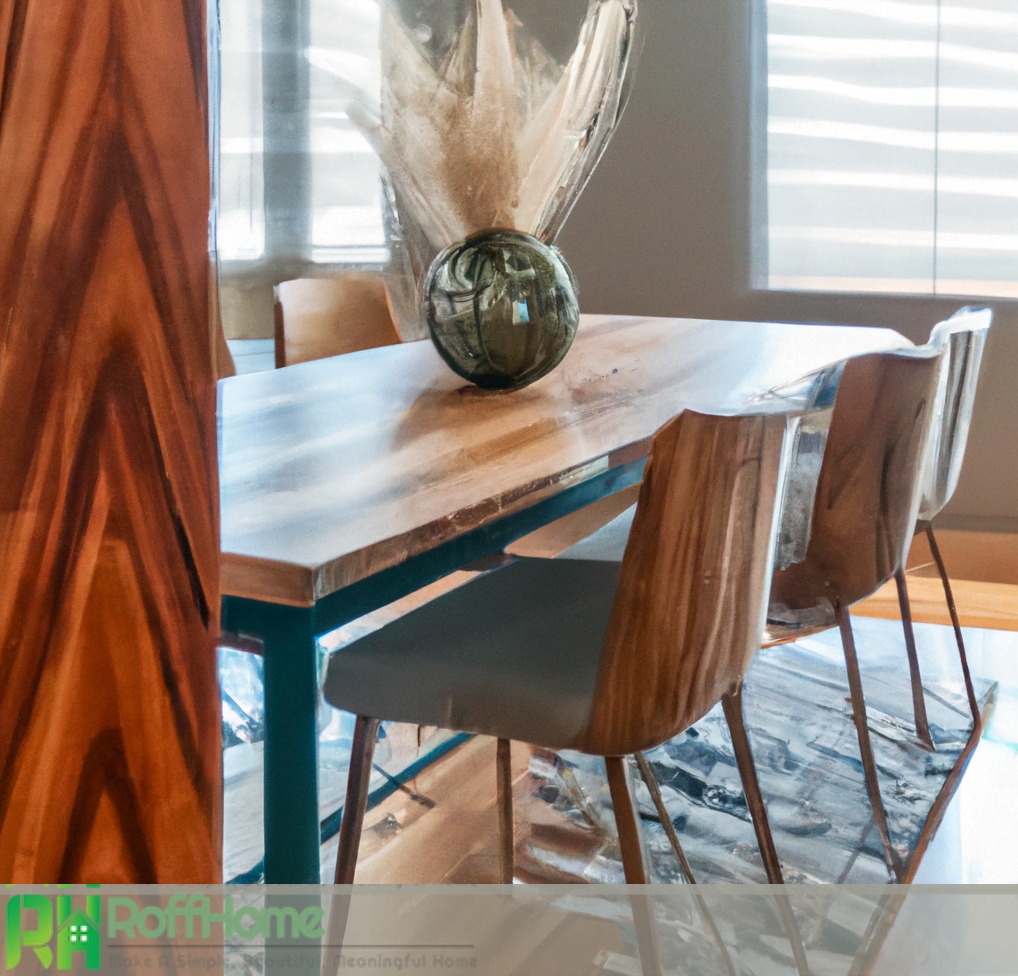
Dining room paneling offers a transformative solution for adding style and elegance to your living space. The dining room is where cherished memories are made, and the right paneling can create a warm and inviting ambiance. With various paneling types available, from traditional to contemporary, rustic to paint, you can choose the perfect style to suit your preferences and design vision.
Traditional paneling exudes a timeless charm, with intricate designs and rich wood finishes that bring a touch of sophistication to your dining room. On the other hand, contemporary paneling ideas embrace clean lines and modern materials, offering a sleek and minimalist aesthetic.
For those seeking a cozy and rustic atmosphere, wood paneling can infuse your dining room with natural beauty and warmth. Wood’s unique texture and depth create a visually pleasing backdrop for your meals and gatherings. Alternatively, painted paneling allows for endless creativity, as you can customize the color and design to match your desired ambiance.
To create focal points and add visual interest, accent walls with paneling can serve as stunning features in your dining room. Wainscoting, a popular choice, not only adds a decorative touch but also protects the walls from everyday wear and tear.
Creative solutions are particularly valuable for small dining rooms, where space optimization is essential. You can create a visually intriguing and dynamic space by mixing materials and styles in your paneling choices, such as combining wood and tile or experimenting with different textures. Proper lighting plays a crucial role in illuminating the dining room and highlighting the beauty of the paneling.
Trendy Dining Room Paneling Ideas for a Modern Look
Modern aesthetics have become increasingly popular in today’s design landscape, and the dining room is no exception. Incorporating trendy paneling ideas can make a significant impact if you’re looking to give your dining space a contemporary and stylish makeover. Let’s explore cutting-edge dining room paneling ideas that will modernize your space.
Geometric Patterns: Embrace geometric paneling designs to add a touch of modernity to your dining room. Whether hexagons, chevrons, or abstract shapes, geometric patterns create visual interest and a sense of movement on your walls.
Textured Wall Panels: Opt for textured wall panels that add depth and dimension to your dining room. These panels, from 3D designs to textured wood or stone finishes, create a tactile experience and a contemporary focal point.
Minimalist Wainscoting: Wainscoting with clean lines and minimalist profiles is an excellent choice for a modern dining room. Opt for sleek, streamlined panels that add architectural interest without overpowering the space.
Metal Accents: Incorporate metal accents into your paneling for an industrial and modern touch. Metal panels or metallic finishes can create a sleek and urban atmosphere in your dining room.
Glass Paneling: Consider using glass panels in your dining room for a modern and airy feel. Frosted or translucent glass panels can provide privacy while allowing natural light to flow, creating an open and contemporary ambiance.
Color Block Paneling: Experiment with color block paneling using contrasting or complementary colors. This modern approach adds vibrancy and visual interest to your dining room walls.
Linear Paneling: Clean horizontal or vertical lines in your paneling design can create a sense of sophistication and modernity. Consider using linear paneling to achieve a sleek and refined look.
Mixed Materials: Combine different materials in your paneling, such as wood, metal, and Glass, to add an eclectic and modern touch. The contrast of textures and finishes adds depth and visual intrigue to your dining room.
Backlit Paneling: Incorporate backlighting behind your paneling to create a dramatic and modern effect. The soft glow behind the panels adds a touch of elegance and ambiance to your dining space.
Monochromatic Paneling: Choose a monochromatic color scheme for your paneling to create a sleek and cohesive modern look. Select shades of gray, white, or black to achieve a minimalist and contemporary aesthetic.

The Timeless Elegance of Traditional Dining Room Paneling
Traditional dining room paneling exudes an undeniable sense of timeless elegance that has stood the test of time. It adds a touch of sophistication and charm to any dining space, creating a warm and inviting atmosphere. Let’s delve into the key aspects and elements that contribute to the enduring appeal of traditional dining room paneling.
Intricate Designs: Traditional paneling often showcases intricate designs and patterns that elevate the overall aesthetic of the dining room. Elaborate carved motifs, ornate moldings, and decorative trim work bring a sense of craftsmanship and artistry to the walls.
Rich Wood Finishes: Wood is the ideal material for traditional paneling. From warm oak to rich mahogany, the natural beauty of wood adds depth, texture, and a sense of luxury to the dining room. The grains and stains of the wood contribute to the overall character and ambiance of the space.
Classic Wainscoting: Wainscoting is a hallmark of traditional paneling. It typically covers the lower portion of the wall, adding visual interest and protection against everyday wear and tear. The lower paneling is often paired with a chair rail or molding, creating a distinct separation between the upper and lower portions of the wall.
Warm Color Palettes: Traditional paneling is often complemented by warm and muted color palettes. Earthy tones, such as shades of beige, taupe, and cream, enhance the classic elegance of the paneling, creating a cozy and inviting environment.
Formality and Sophistication: Traditional paneling lends a sense of formality and sophistication to the dining room. It sets the stage for elegant dinner parties and special gatherings, creating a refined atmosphere that harkens back to a bygone era.
Architectural Detailing: Traditional paneling adds architectural detail to the dining room, transforming plain walls into works of art. The intricate carvings, raised panels, and molding profiles create depth and visual interest, elevating the overall design scheme of the space.
Versatility in Styles: Traditional paneling encompasses a range of styles, from Georgian and Victorian to Colonial and Neoclassical. This versatility allows homeowners to choose a style that harmonizes with their home’s overall architectural elements and design theme.
Timeless Appeal: Perhaps the most significant aspect of traditional paneling is its enduring appeal. It transcends passing trends and fads, symboling elegance and refinement. Traditional paneling adds a touch of heritage and history to the dining room, creating a timeless and classic space.
Creative Painted Paneling Ideas for Dining Rooms
Painted paneling offers a world of creative possibilities for transforming dining rooms. It allows you to add a personal touch, infuse color, and create unique designs that reflect your style and personality. Here are some creative painted paneling ideas to breathe new life into your dining room.
Bold Accent Walls: Choose a vibrant and eye-catching color to paint a single wall, creating a bold accent. This technique adds drama and visual interest to the dining room as a focal point that draws attention and energizes the space.
Two-Tone Panels: Create a striking contrast by painting the upper and lower portions of the paneling in different colors. This two-tone approach adds depth and dimension to the walls while giving a sense of architectural distinction.
Geometric Patterns: Experiment with geometric patterns by painting them onto the paneling. From chevron and herringbone to hexagons and stripes, geometric designs add a modern and artistic touch to the dining room.
Stenciled Designs: Use stencils to create intricate and detailed designs on the paneling. This technique allows you to incorporate motifs, floral patterns, or even personalized artwork onto the walls, transforming them into unique works of art.
Ombre Effects: Create a stunning ombre effect by painting the paneling in a gradient of colors. This technique adds depth and movement to the walls, creating a visually captivating backdrop for your dining area.
Faux Finishes: Experiment with faux finishes like marble or distressed wood to achieve the desired texture or look. These techniques can mimic the appearance of expensive materials, adding a touch of luxury to the dining room.
Chalkboard or Whiteboard Panels: Consider painting a section of the paneling with chalkboard or whiteboard paint. This serves as a creative and interactive element and allows for customization and personalization. You can write menus, inspirational quotes, or even let guests express their creativity during gatherings.
Trompe-l’oeil Effects: Create illusionary effects by painting architectural elements or landscapes onto the paneling. This technique adds depth and whimsy to the dining room, making it a conversation starter.
Mural Art: Transform your dining room into a gallery by painting a mural on the panel. Whether it’s a scenic landscape, abstract artwork, or a personalized design, a mural adds a unique and artistic touch to the space.
Pattern Play: Embrace patterns and designs by painting them onto the paneling. From floral motifs to Moroccan-inspired patterns, patterned paneling creates a visually captivating and lively atmosphere in the dining room.
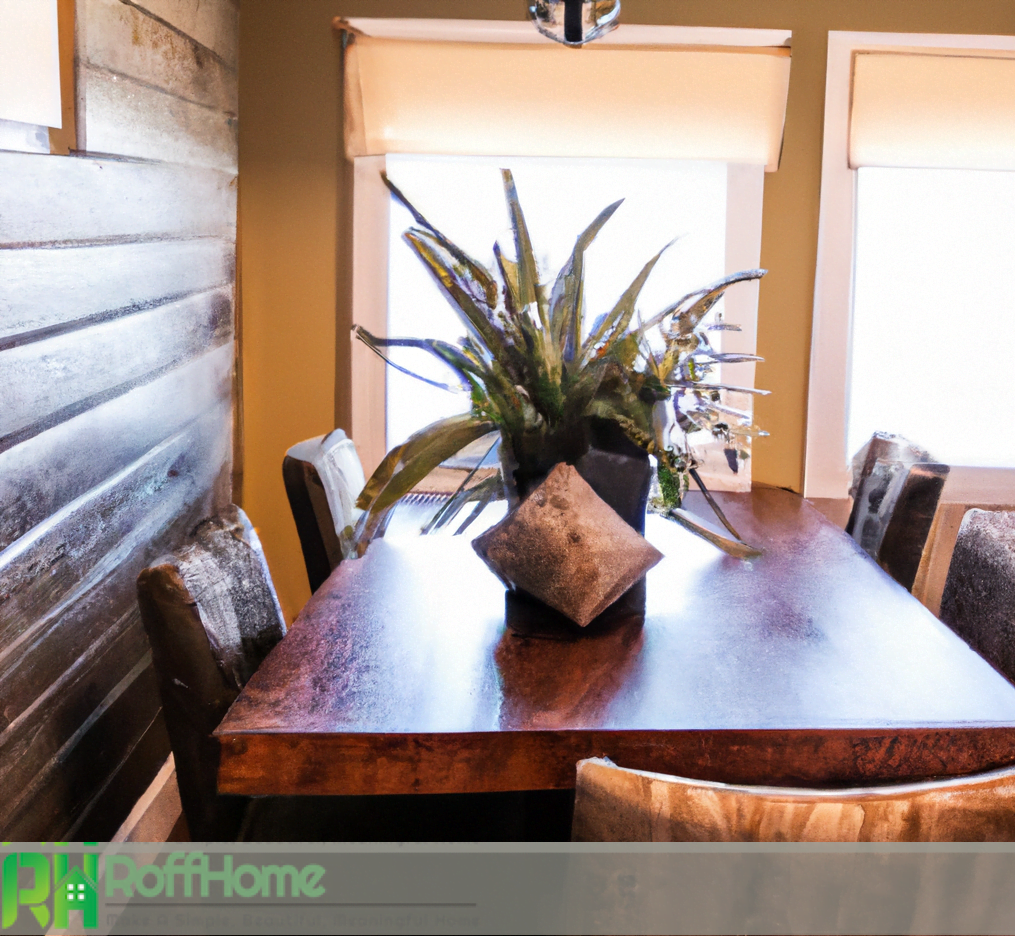
Incorporating Wood Paneling into Dining Room Design
Wood paneling adds warmth, character, and natural beauty to any dining room. It is a versatile design element that can be incorporated into various styles, from rustic to modern, traditional to contemporary. When done right, wood paneling creates a cozy and inviting atmosphere that enhances the dining experience. Here are some key considerations and ideas for incorporating wood paneling into your dining room design.
Selecting the Right Wood: Choose a wood species that align with your desired aesthetic and fits your overall design scheme well. Options range from rich and dark woods like mahogany and walnut to lighter and more natural options like oak or pine. Each wood type brings unique grain patterns and colors, offering different visual effects.
Wall Paneling: Covering the walls with wood paneling creates a warm and rustic ambiance. To add architectural interest, you can opt for full-height paneling or partial wall coverage, such as wainscoting. Consider vertical or horizontal paneling to achieve different design effects.
Ceiling Treatment: Extend the beauty of wood paneling to the ceiling for a dramatic and cohesive look. A wooden ceiling adds warmth and intimacy to the dining room, creating a cozy and welcoming environment. It can be complemented with exposed beams or painted contrasting colors to enhance the visual impact.
Statement Wall: Use wood paneling on a single wall to create a focal point in the dining room. This statement wall can be enhanced with unique wood patterns or customized designs. It serves as a backdrop for artwork, mirrors, or shelving, adding depth and visual interest to the space.
Mixed Materials: Combine wood paneling with other materials to create a dynamic and visually appealing dining room. For example, pairing wood paneling with stone or brick accents adds texture and contrast. Incorporating metal elements or glass inserts can create a modern twist.
Built-In Storage: Incorporate wood paneling into built-in storage solutions, such as cabinets, shelves, or a buffet. This adds functionality and creates a cohesive and seamless look in the dining room paneling. The wood paneling can be extended to the cabinetry doors or used as a backdrop for open shelving.
Flooring: Extend the use of wood by choosing complementary wood flooring. Whether it’s hardwood, engineered wood, or laminate, a matching or coordinating floor enhances the overall design cohesiveness and creates a harmonious flow in the dining room paneling.
Lighting and Accents: Pay attention to lighting fixtures and accent pieces to complement the wood dining room paneling. Warm and soft lighting enhances the natural beauty of the wood, while decorative accents like artwork, mirrors, or textiles can further enhance the visual appeal.
Paneling Ideas for Small Dining Rooms: Maximizing Space and Style
Small dining rooms can present unique challenges when it comes to design and functionality. However, with the right paneling ideas, you can transform a compact dining space into a stylish and functional area that maximizes space and style. Here are some dining room paneling ideas specifically tailored for small dining rooms.
Vertical Paneling: Utilize vertical dining room paneling to create an illusion of height in the room. Vertical lines draw the eye upward, making the space larger and more spacious. Choose narrow, vertical panels, or use beadboard paneling for a classic and elegant look.
Light Colors: Opt for light-colored paneling to create an airy and open feel in the dining room paneling. Light shades reflect more light, making the space feel more expansive. Consider soft whites, creams, or pastel hues to brighten the room.
Mirrored Paneling: Incorporate mirrored dining room paneling to expand the dining room visually. Mirrors create the illusion of depth and reflect light, making the space appear larger and more open. Install mirrored panels as an accent or on a full wall for maximum effect.
Built-In Storage: Combine paneling with built-in storage solutions to maximize space efficiency. Utilize dining room paneling as a backdrop for cabinets, shelves, or banquettes with hidden storage. This not only saves space but also provides a seamless and cohesive look.
Horizontal Paneling: Horizontal dining room paneling can make a small dining room feel wider and more spacious. It creates a sense of continuity and adds visual interest to the walls. Choose narrower horizontal panels or shiplap paneling for a casual and contemporary look.
Glass Paneling: Incorporate glass panels in your paneling design to introduce transparency and lightness. Glass allows for an unobstructed view and brings an open and airy feel to the dining room. Consider frosted or textured Glass for added privacy.
Minimalist Approach:
- Embrace a minimalist design aesthetic for small dining rooms.
- Keep the paneling simple and uncluttered, using clean lines and smooth finishes.
- Avoid excessive ornamentation or heavy textures that can make the space feel cramped.
Accent Wall: Create an accent wall with paneling to draw attention and add visual interest. Choose a focal point wall and install paneling with unique patterns, textures, or contrasting colors. This not only adds style but also detracts from the small size of the room.
Lighting: Proper lighting is crucial in small dining rooms. Incorporate a combination of ambient, task, and accent lighting to create a layered and well-lit space. Pendant lights or wall sconces can add a decorative element while illuminating the dining room paneling area.
Open Shelving: Use open shelving with paneling to showcase decorative items or functional pieces. This adds storage and display space without visually closing off the room. Use the dining room paneling as a backdrop for the open shelves.
Types of Dining Room Paneling: A Comprehensive Guide
Dining room paneling offers a wide range of options to enhance your space’s aesthetic appeal and style. From classic to contemporary, each paneling type brings its unique charm and character. This comprehensive guide will explore various types of dining room paneling to help you choose the perfect option for your home.
Wainscoting: Wainscoting is a popular choice for dining rooms, known for its timeless elegance. It typically covers the lower portion of the wall, protecting it from wear and tear while adding a touch of sophistication. Wainscoting can be crafted from various materials such as wood, MDF, or PVC and comes in different styles, such as raised panels, flat panels, or beadboards.
Raised Panel: Raised panel paneling features decorative panels that add depth and visual interest to the dining room panenling. This traditional style is characterized by its raised center panel surrounded by a frame. Raised paneling is often made of wood and is available in various profiles and finishes to match your desired aesthetic.
Flat Panel: Flat panel paneling, also known as a recessed panel, offers a more contemporary and streamlined look. It features flat panels set within a frame, creating a clean and modern appearance. Flat paneling can be made from wood or other materials like MDF or plywood, providing a versatile option for different design styles.
Beadboard: Beadboard dining room paneling adds a touch of charm and texture to the dining room. It features narrow, vertical planks with decorative beads or grooves running along the surface. Beadboard can be made from wood or PVC and is often used in traditional, farmhouse, or coastal-inspired dining rooms.
Shiplap: Shiplap dining room paneling has gained popularity recently for its rustic and casual appeal. It consists of horizontal boards with a specific gap between each plank. Shiplap adds texture and visual interest to the dining room and can be made from wood or engineered materials like MDF.
Board and Batten: Board and batten paneling offer a classic and architectural look to dining rooms. It features vertical boards (boards) with narrower strips (battens) placed over the seams. This dining room paneling creates a strong visual impact and works well in traditional and modern farmhouse-style dining rooms.
Paneled Accent Wall: An accent wall with paneled dining room paneling can be a focal point. It adds depth, texture, and visual interest to the space. To create a unique and eye-catching feature wall, you can choose from various paneling styles, such as geometric patterns, textured designs, or custom configurations.
Mixed Materials: Dining room Paneling doesn’t have to be limited to a single material. Mixing different materials like wood, stone, metal, or Glass can create a dynamic and visually striking dining room. Combining paneling with other materials adds texture, contrast, and a contemporary touch.
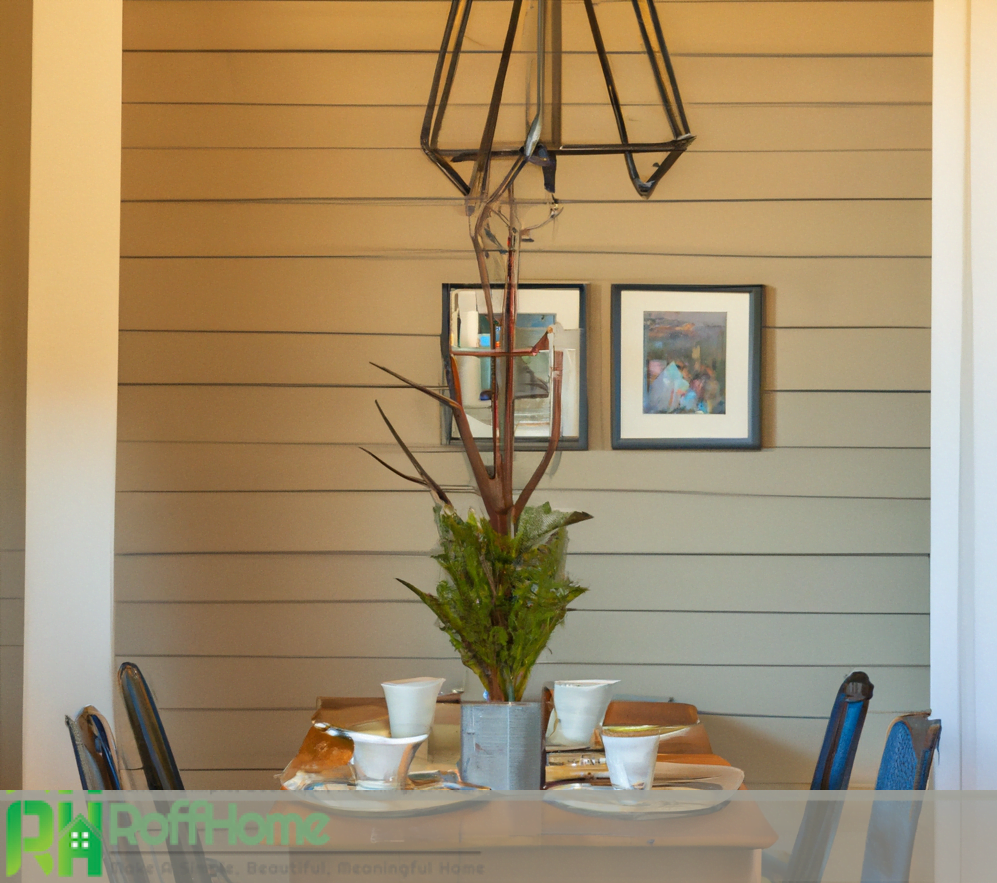
DIY Dining Room Paneling: Step-by-Step Installation Guide
DIY paneling can be a rewarding and cost-effective option if you want to add a touch of elegance and character to your dining room. Installing dining room paneling allows you to customize the design and create a unique space that reflects your style.
Plan and Measure: Plan your paneling layout and measure the walls. Consider the height and width of the dining room paneling, as well as any architectural features or obstacles like windows and doors. This will help you determine the amount of material needed for the project.
Choose the Paneling Style and Material: Select the paneling style and material that aligns with your desired aesthetic and fits the overall design of your dining room paneling. Common options include wainscoting, beadboard, or flat paneling in wood, MDF, or PVC materials.
Prepare the Walls: Ensure the walls are clean, smooth, and free of any existing paint or wallpaper. Patch any holes or imperfections and sand the surface for a smooth finish.
Install the Baseboard: Start by installing the baseboard along the bottom of the wall. Use a level to ensure it is straight, and secure it with nails or adhesive.
Cut and Install the Panels:
- Measure and cut the panels according to your desired dimensions.
- Use a saw or a jigsaw to make precise cuts.
- Apply construction adhesive to the back of the panels and press them firmly against the wall.
- Use a level to ensure they are straight, and secure them with nails or screws.
Add Trim and Molding: Install trim pieces such as chair rail or crown molding to enhance the overall look of the paneling. Use a miter saw to cut precise angles and secure the trim with adhesive and nails.
Fill and Sand: Fill any nail holes or gaps with wood filler. Once dry, sand the dining room paneling and trim to create a smooth surface.
Prime and Paint:
- Apply a coat of primer to the paneling and trim to ensure proper paint adhesion.
- Once the primer is dry, apply your chosen paint color using a brush or roller.
- Consider using a satin or semi-gloss finish for easy cleaning and durability.
Finishing Touches: Inspect the dining room paneling for any touch-ups or additional detailing once the paint is dry. Add final touches, such as decorative elements or accessories, to complete the look.
Painted Paneling Ideas for Dining Rooms: Colors, Techniques, and Tips
Painted paneling can completely transform the look and feel of a dining room, adding personality, style, and a fresh update. Whether you have traditional wood paneling or want to revamp a more modern paneling style, painting is a versatile solution. Here are some ideas, techniques, and tips to inspire your painted dining room paneling project.
Color Selection: Choose a paint color that complements your dining room’s overall design scheme and desired ambiance. Consider the size of the room and the amount of natural light it receives. Lighter colors like whites, creams, or pastels can make the space feel larger and brighter, while darker hues like navy, charcoal, or deep greens create a cozy and intimate atmosphere.
Two-Tone Effect: Create visual interest using two different paint colors on your dining room paneling. For a classic look, paint the lower portion of the paneling in a darker shade and the upper portion in a lighter hue. This technique called a chair rail effect, adds depth and dimension to the walls.
Accent Color: Introduce an accent color to make a statement in your dining room. Choose a bold or contrasting color and paint a single wall or a specific paneling section. This draws attention and creates a focal point in the room, adding drama and personality.
Paint Techniques: Experiment with different paint techniques to add texture and visual interest to your dining room paneling. Techniques like distressing, glazing, or faux finishes can create a vintage or rustic look. Stenciling or hand-painted patterns can add a touch of whimsy and uniqueness.
Prepping the Surface:
- Properly prepare the paneling surface before painting.
- Clean the panels thoroughly to remove any dirt, grease, or residue.
- Sand the surface lightly to promote better paint adhesion.
- Use a primer designed for paneling to ensure a smooth and long-lasting finish.
Quality Paint and Tools:
- Invest in high-quality paint and tools for the best results.
- Choose a paint with a durable finish, such as satin or semi-gloss that is easy to clean.
- Use brushes or rollers suitable for the type of paint and the texture of your dining room paneling.
Test and Sample: Before committing to a color, test it on a small section of your paneling or a sample board. This lets you see the color in your dining room’s lighting conditions and how it interacts with the paneling material.
Finishing Touches: Consider adding additional decorative elements to enhance your painted paneling. Crown molding, trim, or decorative wall decals can elevate the look and provide a polished and cohesive appearance.
Maintenance and Touch-Ups: Remember that painted paneling may require occasional touch-ups or maintenance. Regularly clean the surface with a gentle cleanser and touch up any chips or scratches to keep your dining room looking fresh and vibrant.
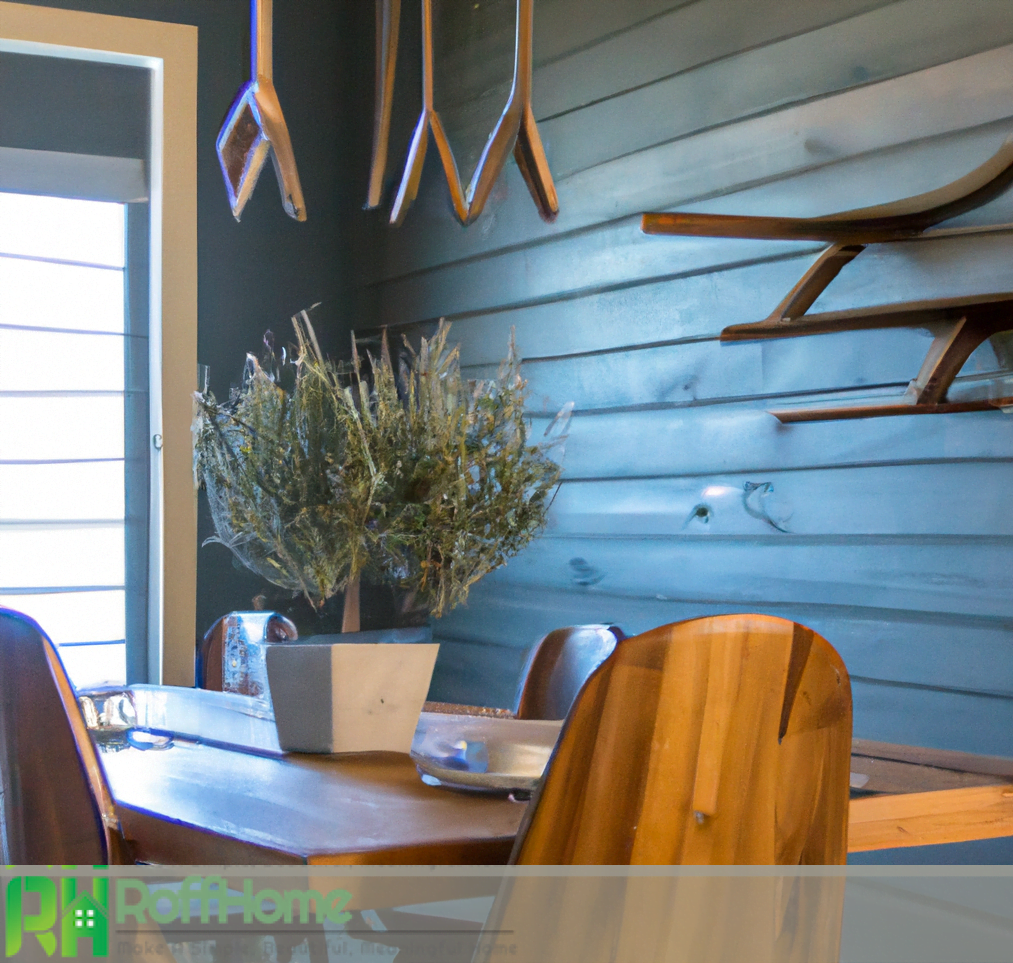
The Benefits of Paneling in the Dining Room: Aesthetics and Functionality
The dining room paneling can bring many benefits, enhancing the space’s aesthetics and functionality. Whether you choose traditional wood paneling or a more modern style, the addition of paneling can elevate the overall design and create a welcoming atmosphere. Here are some key benefits of incorporating into your dining room paneling.
Enhanced Aesthetics: Paneling adds a touch of elegance and sophistication to the dining room. It creates visual interest and texture on the walls, serving as a backdrop for furniture, artwork, and decor. With a wide range of paneling options available, from classic wainscoting to contemporary shiplap, you can choose a style that aligns with your desired aesthetic, whether traditional, rustic, or modern.
Architectural Interest: Paneling can bring architectural interest to the dining room, especially in spaces that lack architectural features. It can define the room’s boundaries, create focal points, or highlight specific areas such as accent walls or the dining table.Dining room paneling can transform a plain, ordinary dining room into a visually captivating and dynamic space.
Texture and Depth: The texture provided by paneling adds depth and dimension to the dining room walls. Whether it’s the raised panels of wainscoting or the horizontal lines of shiplap, the play of light and shadow on the paneling enhances the overall ambiance of the room. Texture can evoke a sense of warmth, intimacy, and tactile appeal.
Protection and Durability: Paneling protects the walls, particularly in high-traffic areas like the dining room. It acts as a shield against scuffs, scratches, and other wear and tear, ensuring the longevity of your walls. Additionally, paneling made from durable materials like wood or PVC is moisture-resistant, making it a practical choice for a dining room environment.
Acoustic Benefits: Paneling can contribute to sound absorption in the dining room, improving acoustics and reducing noise levels. This is particularly beneficial in larger dining spaces or open-plan layouts, where echoes and reverberation can be an issue. The paneling’s texture and density help dampen sound, creating a more comfortable and enjoyable dining experience.
Easy Maintenance: Paneling is generally easy to clean and maintain, making it a practical choice for dining rooms. Unlike painted walls that may require frequent touch-ups, paneling is less prone to visible wear and stains. Regular dusting and occasional wiping with a damp cloth are usually sufficient to keep the paneling looking its best.
Versatility and Customization: Paneling offers versatility and customization options for your dining room. From choosing the type of paneling and material to selecting the paint color or stain, you can create a personalized space that reflects your style and preferences. Paneling can be adapted to various design themes, allowing you to achieve a cohesive and harmonious look in your dining room paneling.
In conclusion, dining room paneling ideas offer myriad possibilities to elevate your space’s aesthetics and functionality. Paneling adds depth, texture, and architectural interest from traditional to contemporary styles, creating a welcoming and visually captivating dining environment.

